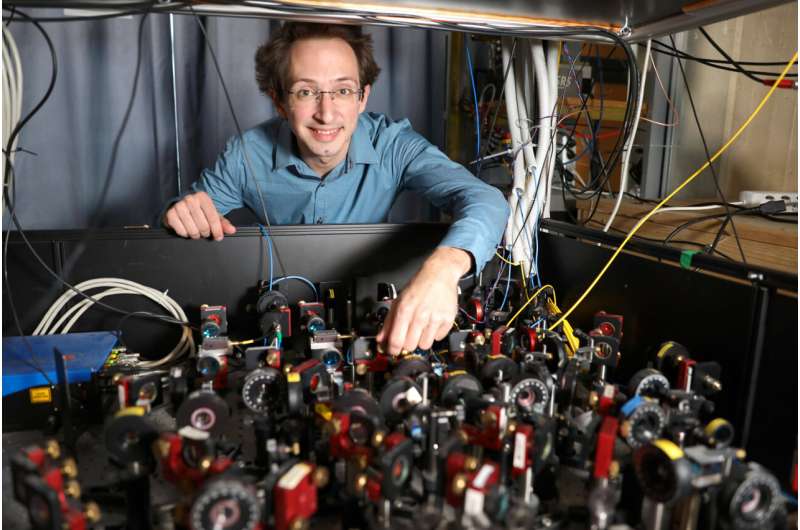
JULY 21, 2022 by University of Innsbruck

We all learn from early on that computers work with zeros and ones, also known as binary information. This approach has been so successful that computers now power everything from coffee machines to self-driving cars and it is hard to imagine a life without them.
Building on this success, today’s quantum computers are also designed with binary information processing in mind. “The building blocks of quantum computers, however, are more than just zeros and ones,” explains Martin Ringbauer, an experimental physicist from Innsbruck, Austria. “Restricting them to binary systems prevents these devices from living up to their true potential.”
The team led by Thomas Monz at the Department of Experimental Physics at the University of Innsbruck, now succeeded in developing a quantum computer that can perform arbitrary calculations with so-called quantum digits (qubits), thereby unlocking more computational power with fewer quantum particles. Their study is published in Nature Physics.
Quantum systems are different
Although storing information in zeros and ones is not the most efficient way of doing calculations, it is the simplest way. Simple often also means reliable and robust, so binary information has become the unchallenged standard for classical computers.
In the quantum world, the situation is quite different. In the Innsbruck quantum computer, for example, information is stored in individual trapped Calcium atoms. Each of these atoms naturally has eight different states, of which typically only two are used to store information. Indeed, almost all existing quantum computers have access to more quantum states than they use for computation.

A natural approach for hardware and software
The physicists from Innsbruck have now developed a quantum computer that can make use of the full potential of these atoms, by computing with qubits. Contrary to the classical case, using more states does not make the computer less reliable. “Quantum systems naturally have more than just two states and we showed that we can control them all equally well,” says Thomas Monz.
On the flipside, many of the tasks that need quantum computers, such as problems in physics, chemistry, or material science, are also naturally expressed in the qudit language. Rewriting them for qubits can often make them too complicated for today’s quantum computers. “Working with more than zeros and ones is very natural, not only for the quantum computer but also for its applications, allowing us to unlock the true potential of quantum systems,” explains Martin Ringbauer.
More information: Martin Ringbauer, A universal qudit quantum processor with trapped ions, Nature Physics (2022). DOI: 10.1038/s41567-022-01658-0. www.nature.com/articles/s41567-022-01658-0
Journal information: Nature Physics
Provided by University of Innsbruck
Collected at: https://phys.org/news/2022-07-quantum.html?utm_source=nwletter&utm_medium=email&utm_campaign=weekly-nwletter

Leave a Reply